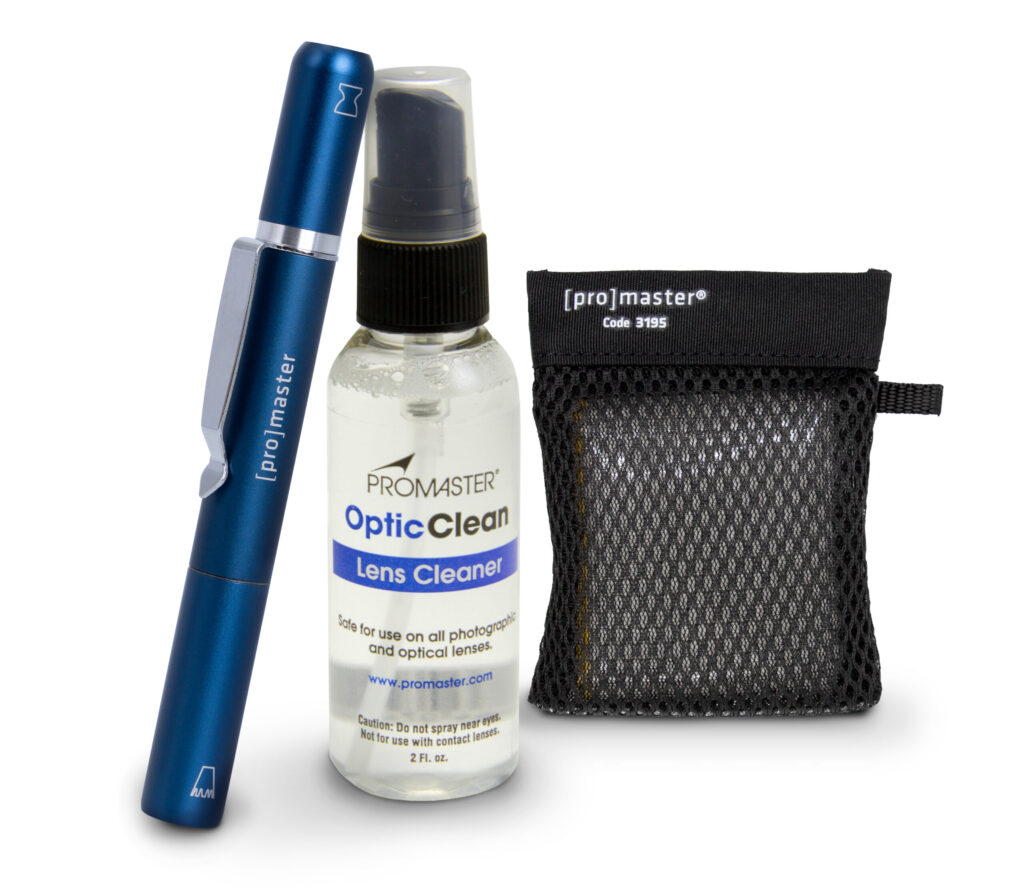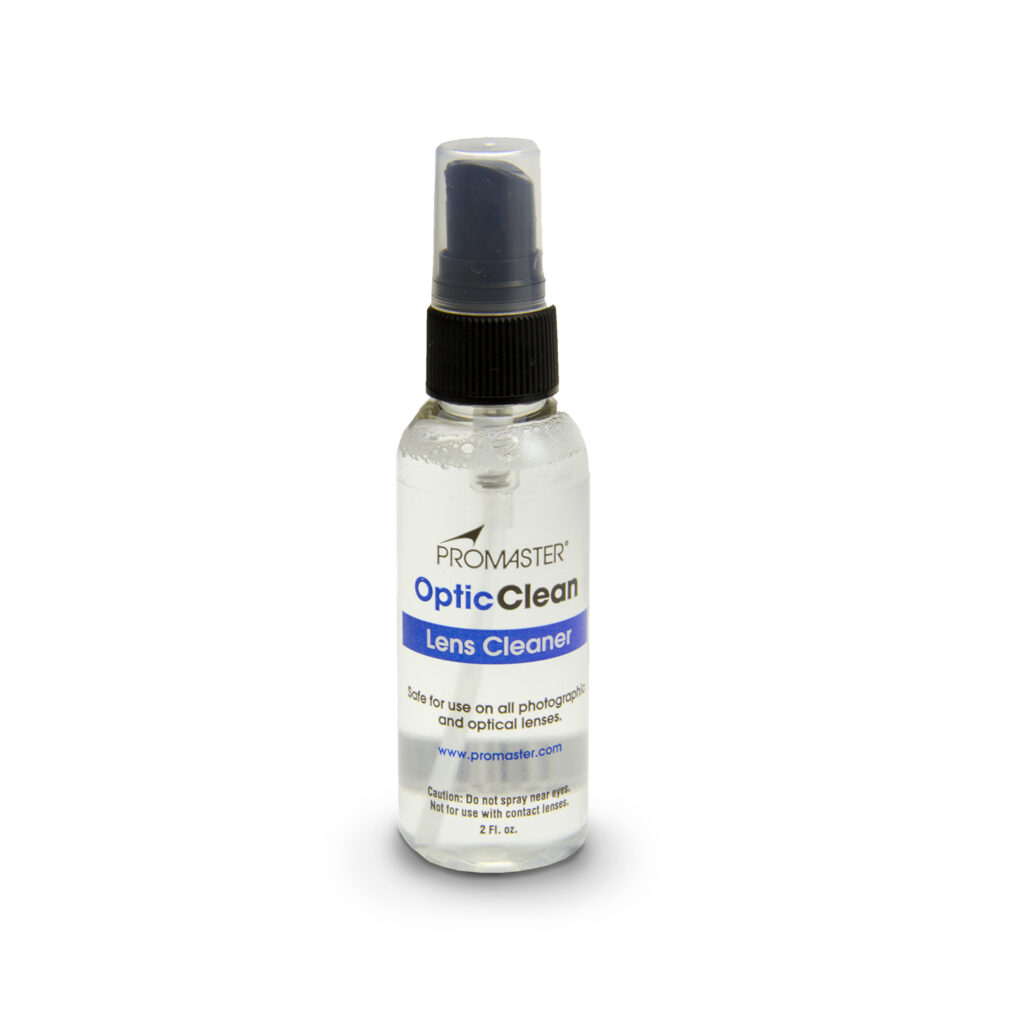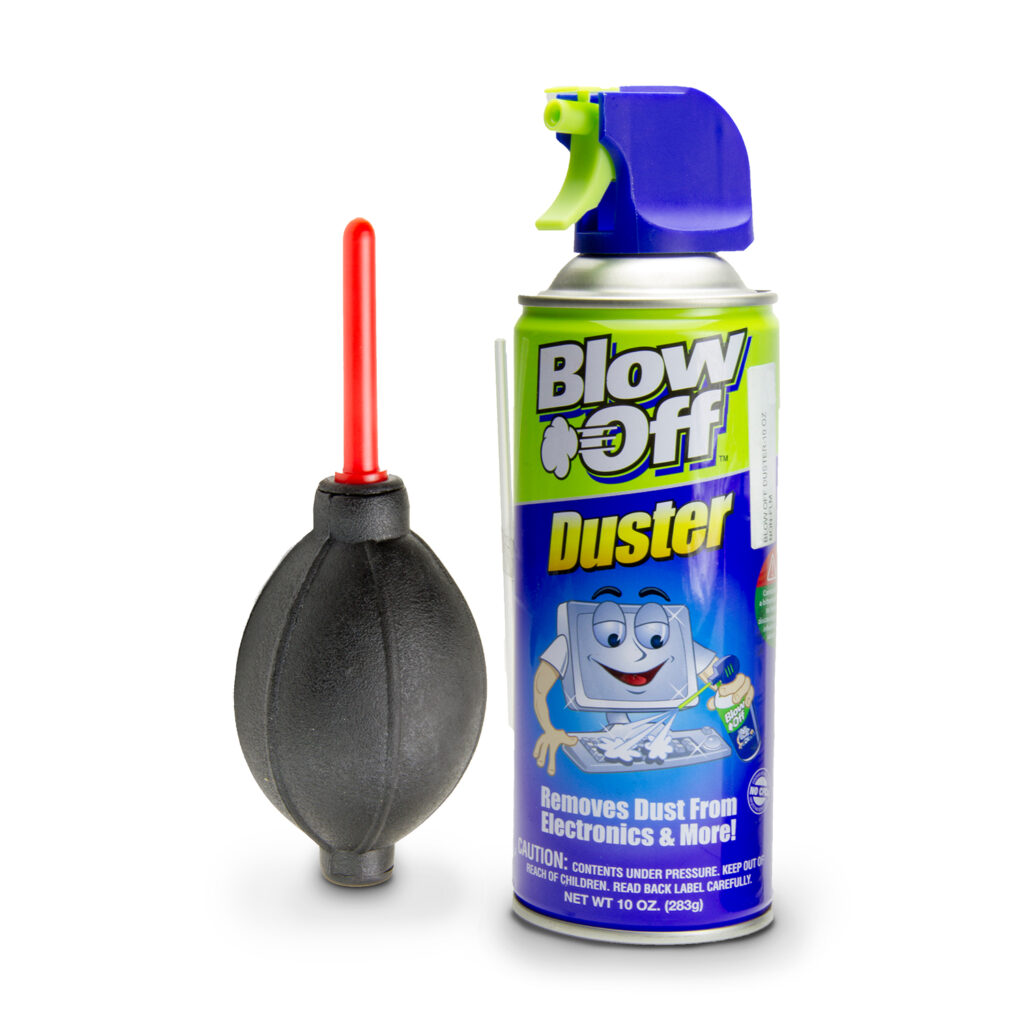Camera Lens Cleaning Kit
Lens Cleaning Kit: How to Clean a Camera Lens
To keep your lens clean, use proper cleaning tools such as a blower, lens brush, microfiber cloth, and lens cleaning solution. Avoid using rough or abrasive materials that could scratch the lens.

If you have a Tamron lens with Fluorine coating, cleaning the front element is easy. Simply take a microfiber lens cloth, a warm exhale of breath (optional), and wipe it clean.
If you have a lens without the Fluorine coatings this process will be slightly different. Use a lens cleaning fluid without water but with a quick-drying agent.
A camera lens cleaning kit will have all the items you need to clean your lens. Continue treading to learn more of our camera lens cleaning tips.
What is in a camera lens cleaning kit?
Visit a camera store near you to check out the lens cleaning kits they have. A good cleaning kit will include the following:
- a hand air blower
- fine bristle lens brush
- microfiber lens cloth or optical quality lens tissue
- lens cleaning fluid
- You may purchase a lens pen and canned air separately
How to clean a camera lens like a pro?
We recommend using the cleaning technique used by our repair service technicians.
- Use the hand blower to remove noticeable dust particles from the lens.
- Alternatively, you may use canned air.
- Then, use a soft brush to remove any leftover dust. Use the lens pen to clean the edges of the lens element.
- Use the tissue or cloth next. Start in the middle of the front lens element, using slow concentric circles and working your way toward the outer edges.
- Use a lens cleaning tool or lens cleaning pen to clean the outer edges of the front element.
- If you are using a tool, wrap the lens cleaning tool with the cloth or tissue. Put two to three drops of cleaning fluid on the wrapped end of the tool.
How do I make my own lens cleaning tool?
- Pick up a pair of chopsticks from your favorite restaurant. Chopsticks made from bamboo are best since they usually have round tip and often have a flat wider backend. This is important because your tool will eventually end up being flat at both ends. Bamboo chopsticks are also easier to work with and end up lasting much longer as a lens cleaning tool.
- Use a sharp knife to shave small amounts of material from the front of the chopstick. Do this about half an inch away from the edge. Make sure to work away from yourself to avoid accidents.
- Make several passes with the tool. Turn the front tip 180 degrees. Repeat this process until you have a flat end.
- The flat end should be about half an inch long and 1/16 of an inch thick. It should resemble a standard flat-tip screwdriver.
- Now, that you’ve finished the front tip, repeat the process on the wider back end of the chopstick. You will end up with a cleaning tool that has two different width tips.
- Take your newly fabricated tool and a lens cleaning cloth (or optical-quality tissue) and fold one of the corners. Put one end of the tool in the gap at the front of the fold. Roll it two or three times to cover the tip. You should now be ready to clean the front element of your lenses.
Why is it so important to keep my lens clean?
Keeping the front element of your camera lens clean is crucial for several reasons:
- Image Quality: Dirty front lens can make your photos look bad. Dust, smudges, and fingerprints can ruin image quality. These imperfections can cause blurriness, reduce contrast, and introduce unwanted artifacts such as lens flares and ghosting. By keeping the lens clean, you ensure the sharpest and clearest images possible.
- Light Transmission: A clean lens allows maximum light to pass through to the camera sensor. Any dirt or smudges on the lens can obstruct light, resulting in dull, underexposed, or unevenly lit photos. Clean lenses help maintain the brightness and accuracy of the colors in your images.
- Autofocus Performance: Modern cameras rely on precise autofocus systems to capture sharp images. A dirty lens can make it difficult for the autofocus system to focus correctly, leading to slow or inaccurate results.
- Lens Longevity: Regular cleaning and proper maintenance of your lens can help extend its lifespan. Dirt and debris can scratch the lens coating over time, degrading its optical performance. By keeping your lens clean, you protect it from potential damage and ensure it remains in good condition.
- Professionalism: For professional photographers, maintaining clean equipment reflects a high level of care and attention to detail. Professionals need to deliver top-notch work, and keeping clean lenses is essential for meeting that expectation.
- Image Processing: Post-processing is easier when working with a clean, high-quality image. Fixing issues caused by a dirty lens in post-processing is more difficult. Fixing problems like spots, flares, or reduced contrast can be time-consuming and may not always yield perfect results.
Inspect your lens regularly and clean it gently and carefully to maintain its performance and longevity.




